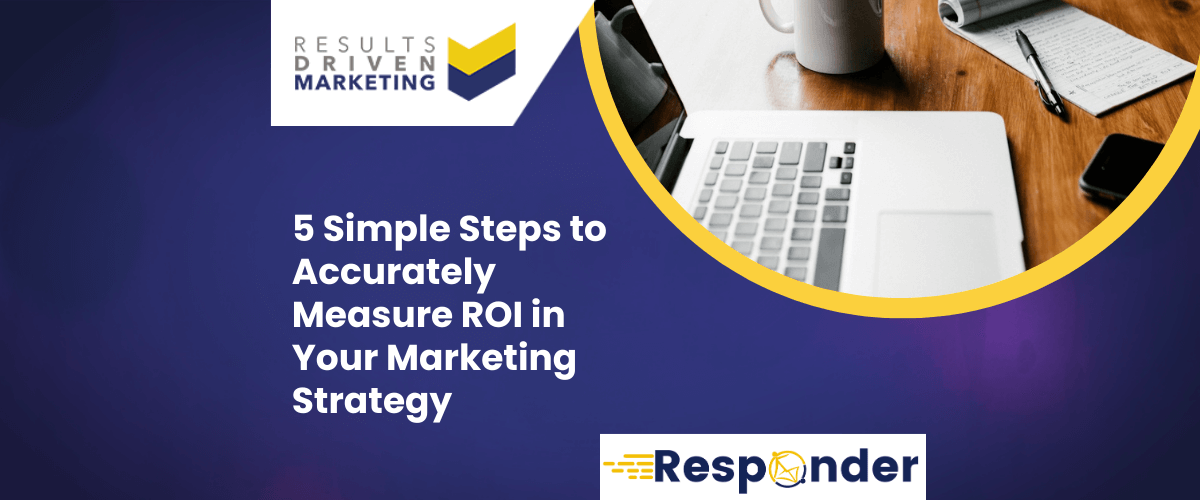
5 Simple Steps to Accurately Measure ROI in Your Marketing Strategy
When it comes to running effective marketing campaigns, understanding how to measure ROI in marketing isn’t just a nice-to-have—it’s essential. ROI, or Return on Investment, is basically the metric that tells you whether your marketing efforts are paying off. In simple terms, it’s the ratio between the net profit you gain from your marketing activities and the total cost you invested. Knowing this helps you figure out if your strategies are hitting the mark or if they need a little tweaking.
But why is measuring ROI in marketing so crucial? Well, here’s the thing:
- Budget Justification: It shows where your marketing budget is making the most impact, helping you allocate resources more wisely.
- Performance Insights: It highlights which campaigns are driving results and which aren’t, so you can focus on what works.
- Strategic Decisions: With clear data, you can make smarter decisions to boost future campaigns and improve overall business growth.
Whether you’re working with B2B data, launching email marketing campaigns, or managing direct mail data, understanding your ROI helps you fine-tune strategies for maximum efficiency. Speaking of which, if you’re looking for ways to improve your marketing data, check out our B2B Data services at RD Marketing. We provide data-driven solutions designed to help businesses like yours get the most out of every marketing pound spent.
Table of contents:
Step 1: Define Clear Objectives for Your Campaign
One of the foundational steps in learning how to measure ROI in marketing is setting clear, achievable objectives for each campaign. Without precise goals, calculating an accurate ROI is almost impossible.
Having specific, measurable objectives not only makes ROI measurement straightforward but also ensures that your campaigns align with your overall business strategy.
Why Setting Clear Objectives Matters
When goals are clearly defined, it’s easier to assess which metrics are most relevant to track. Are you aiming to increase brand awareness, generate leads, or boost sales directly?
Each objective requires a different approach, so defining these goals from the start ensures your metrics are meaningful and can directly inform your ROI calculations.
Imagine, for example, a vague objective like “increase online presence.” While it might sound valuable, this type of goal doesn’t lend itself well to measurable metrics. Instead, a goal like “increase website traffic by 25% over the next quarter” gives you something tangible to aim for and assess.
With this clarity, you can track key metrics such as visitor count, engagement rate, and even conversion data if you’re using Email Address List Data to drive traffic.
How Clear Objectives Help Focus on the Right Metrics
When you know exactly what your campaign aims to achieve, it becomes simpler to focus on metrics that reflect your progress. For example:
- Brand Awareness: Track impressions, reach, and engagement rates.
- Lead Generation: Monitor the number of qualified leads, conversion rates, and cost per lead.
- Sales: Measure revenue, profit margins, and customer acquisition cost.
By aligning your goals with these relevant metrics, you can determine the ROI with far greater accuracy, and ultimately, make informed decisions about optimising or scaling your campaigns.
Step 2: Identify and Track Relevant Metrics
After setting clear objectives, the next essential step in understanding how to measure ROI in marketing is identifying and tracking the right metrics.
The metrics, or key performance indicators (KPIs), serve as the foundation for calculating ROI. Choosing the right ones helps you get a precise snapshot of your campaign’s effectiveness.
Common Marketing Metrics to Track
Each marketing campaign may require different metrics depending on the objectives. Here’s a list of common KPIs that are crucial for measuring ROI accurately:
- Lead Conversion Rate: Measures how many potential leads turn into actual customers. Especially valuable in email campaigns and Telemarketing Data strategies, this KPI helps gauge the effectiveness of lead-generation efforts.
- Customer Lifetime Value (CLV): CLV estimates the total revenue a customer is expected to generate over their relationship with your brand. It’s particularly useful if you’re running campaigns targeting long-term engagement.
- Cost Per Lead (CPL): A useful metric for campaigns that involve list-building strategies, like using Email Address List Data. CPL lets you see how much each lead costs, helping you understand whether your spending aligns with your expected ROI.
- Click-Through Rate (CTR): This measures the effectiveness of ad creatives and calls-to-action, especially in digital and Direct Mail Data campaigns.
- Revenue and Profit Margin: Directly ties into ROI, as revenue and profit margins give a bottom-line figure to assess the overall financial success of any campaign.
Choosing Metrics Based on Campaign Type
Selecting metrics tailored to your specific campaign ensures that your ROI calculation is as accurate as possible. For example:
- Email Marketing Campaigns: If you’re using International Email Lists, prioritise CTR, conversion rate, and CPL to measure engagement and lead cost effectively.
- Brand Awareness Campaigns: Impressions, reach, and engagement rates are relevant here, as the focus is on visibility rather than direct sales.
- Sales-Focused Campaigns: For campaigns aimed at driving revenue, like promotions using Consumer Data, metrics such as customer acquisition cost and total revenue are vital.
Step 3: Calculate Your Costs Accurately
Now that you’ve identified the right metrics, it’s time to tackle one of the most crucial aspects of learning how to measure ROI in marketing: accurately calculating your costs.
Without a clear and precise calculation of your total expenses, your ROI analysis may not reflect the true value of your campaign’s performance.
The Importance of Tracking Costs for Realistic ROI Measurement
To get an accurate measure of ROI, it’s essential to account for every cost associated with the campaign. These include:
- Media Costs: This covers expenses for digital ads, paid search, social media ads, or any other media buys. If, for example, you’re using Telemarketing Data, media costs may involve call expenses and contact fees.
- Technology Costs: These could be costs for marketing software, CRM systems, or tracking tools. Using a service like Email Marketing Management Services helps streamline campaign tracking, but remember to include it in your budget.
- Creative Costs: This includes any design, content creation, or production costs. Whether it’s developing ad visuals or writing blog posts, these expenses are often overlooked but should be part of your total cost calculation.
- Personnel Costs: Include salaries or contractor fees for anyone directly involved in the campaign, from strategists to designers to social media managers. If the campaign involves complex data processes, using tools like Data Cleansing Services or Data Enrichment Services can optimise your team’s efforts but should also be factored in.
Methods to Consolidate and Track Costs
Consolidating all costs into one clear budget not only helps you track your expenses but also ensures accuracy when calculating ROI. Here’s a simple approach:
Categorise Costs: Break down your expenses into categories like media, technology, creative, and personnel.
Use a Tracking Tool: Consider using a spreadsheet or marketing software to track expenses in real-time. Many businesses find CTPS Checker valuable for tracking telemarketing compliance, which can save you from unexpected costs due to fines.
Regularly Update: Consistently updating costs throughout the campaign lets you monitor spending closely and prevent budget overruns.
Step 4: Analyse Results with the Right Formula
Once you have clear objectives, relevant metrics, and an accurate cost calculation, the next step in mastering how to measure ROI in marketing is to analyse the results using a straightforward ROI formula.
Knowing how to apply this formula effectively can give you a clear view of how well your marketing dollars are working for you and help you determine which strategies are worth repeating.
Step 5: Adjust and Optimise Based on Findings
The final, and perhaps most rewarding, step in mastering how to measure ROI in marketing is taking those ROI insights and turning them into actionable improvements.
Refining your marketing strategies based on what the data tells you is key to maximising return, reducing waste, and amplifying the overall effectiveness of future campaigns.
Why Adjusting Campaigns Based on ROI is Crucial
Every ROI analysis offers invaluable insights into what worked and what didn’t. It highlights the strategies that delivered results and areas that may need refinement.
By evaluating these findings and making adjustments, you ensure that each future campaign is stronger, more targeted, and more likely to yield higher returns. It’s a continuous improvement process that sharpens your approach over time.
Areas to Adjust for Better Results
Audience Targeting: One of the most impactful adjustments you can make is refining your target audience. By analysing the demographics, preferences, and engagement rates of your audience, you can hone in on those who are most likely to convert.
If, for instance, your Consumer Data campaign reaches a wide audience but only a segment converts, consider focusing more narrowly on that specific segment.
Budget Allocation: Not all marketing channels deliver the same ROI, so reallocating your budget based on previous ROI performance can enhance results. If your analysis shows that Email Marketing Management Services yield higher returns than social ads, it might make sense to shift more budget toward email campaigns in the future.
Creative Elements: Adjusting the visuals, messaging, and calls-to-action based on past performance can make a significant difference. By analysing which creatives performed best in prior campaigns, you can fine-tune future ones for a more compelling impact.
Data Quality: High-quality data often translates to better results. Using services like Data Cleansing Services can keep your contact lists fresh and accurate, leading to higher engagement rates.
Additionally, with Data Enrichment Services, you can gain deeper insights into your audience, allowing for more personalised and effective campaigns.
Channel Selection: Different channel marketing b2b strategies have varied levels of effectiveness depending on your goals. Reviewing ROI by channel – such as analysing the success of campaigns run with Direct Mail Data versus digital-only campaigns – can help identify which channels deserve more focus and resources.
Taking an Iterative Approach
Remember, marketing optimisation is an ongoing journey. After every campaign, take the time to review your ROI and incorporate the insights into the next strategy.
Each adjustment brings you closer to a finely tuned marketing process that yields consistent, profitable returns.
By iteratively refining each element based on ROI data, you’ll develop a strategy that not only delivers strong results but also continuously evolves to meet changing market demands.
Understanding how to measure ROI in marketing, from setting clear objectives to adjusting based on findings, provides a solid framework for marketing success.
Ready to take your campaigns to the next level? Visit RD Marketing and explore services like B2B Data and CTPS Checker to get started on refining your strategies and maximising your returns.
Conclusion
Let’s recap the five simple steps that can take your marketing from guesswork to precision:
Define Clear Objectives for Your Campaign: Start with specific, measurable goals that align with your overall business strategy. The clearer your objectives, the easier it becomes to focus on the right metrics and evaluate success.
Identify and Track Relevant Metrics: Choose KPIs that best reflect your campaign goals, whether it’s lead conversion rates or customer lifetime value. Consistent tracking of these metrics is essential to avoid skewed results and maintain accuracy in your ROI analysis.
Calculate Your Costs Accurately: Ensure you capture all expenses related to your campaign, from media and technology to personnel and creative costs. Knowing the true cost of your efforts is key to a realistic ROI calculation.
Analyse Results with the Right Formula: Using the simple ROI formula, evaluate your campaign’s performance. Customise the formula based on the campaign type to get a clear view of what worked and where there’s room for improvement.
Adjust and Optimise Based on Findings: Use the insights gained from your ROI analysis to make strategic adjustments. Whether it’s refining your audience targeting or reallocating budget, continuous optimisation is what drives long-term success.
If you’re ready to take your marketing strategy to the next level, visit RD Marketing. Explore our range of services, from Telemarketing Data and Email Address List Data to Data Enrichment Services and CTPS Checker.
With the right data and tools, you can build a strategy that consistently delivers measurable results and maximises ROI.
Who are we?
Thinking about “how do I buy data“?
Providing b2b database solutions is our passion.
Offering a consultancy service prior to purchase, our advisors always aim to supply a database that meets your specific marketing needs, exactly.
We also supply email marketing solutions with our email marketing platform and email automation software.
Results Driven Marketing have the best data of email lists for your networking solutions as well as direct mailing lists & telemarketing data in telemarketing lists
We provide data cleansing and data enrichment services to make sure you get the best data quality.
We provide email marketing lists and an international email list for your business needs.
At RDM We provide b2c data as we have connections with the best b2c data brokers.
A good quality b2b database is the heartbeat of any direct marketing campaign…
It makes sense to ensure you have access to the best!
Call us today on 0191 406 6399 to discuss your specific needs.
Results Driven Marketing
0191 406 6399










